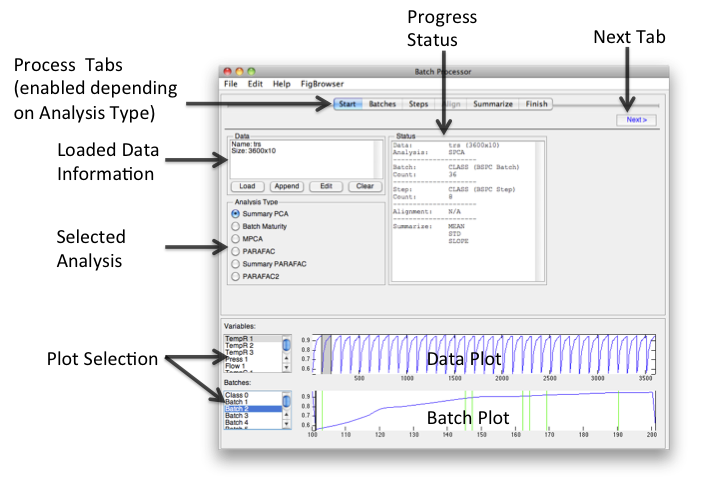Bspcgui: Difference between revisions
imported>Scott No edit summary |
imported>Scott No edit summary |
||
| Line 37: | Line 37: | ||
* Dropping data onto the status area will load data. If previously loaded exists, a prompt for overwrite or augment will appear. | * Dropping data onto the status area will load data. If previously loaded exists, a prompt for overwrite or augment will appear. | ||
** If augment is chosen, two options will be given, augment as new batch or not. Augment as new batch adds a class for the data being augmented otherwise a "normal" augment will occur and if the new dataset has a matching class it will be merged. | ** If augment is chosen, two options will be given, augment as new batch or not. Augment as new batch adds a class for the data being augmented otherwise a "normal" augment will occur and if the new dataset has a matching class it will be merged. | ||
* Dragging and dropping multiple-selected (Excel) files from the system browsers (e.g., Windows Explorer or Finder) will pre-augment the files and create a label indicating file name. This label can be used to identify batches in the '''Batches''' tab. | |||
* Data can be edited in the [[DataSet Editor]] by clicking the '''Edit''' button. Editing will cause the model to be cleared. | |||
Revision as of 12:48, 24 August 2012
Introduction
Batch Statistical Process Control (BSPC) is the analysis of process data where the process inherently loops of "batches".
Model Types
| Model | Modes (Dimensions) | Equal Length Batches | Steps Aligned | Comments |
|---|---|---|---|---|
| Summary PCA | 2 | No | No | Orientation = batches x (step/summary) |
| Batch Maturity | 2 | No | No | Can have Y-Block to indicate maturity |
| MPCA | 3 | Yes | Yes | |
| PARAFAC | 3 | Yes | Yes | |
| Summary PARAFAC | 3 | No | No | Orientation = batches x step x summary |
| PARAFAC2 | 3 | No | No |
Experiment Designer Window
The goal of the Batch Processor interface is to make it easier to assemble “batch” data for multivariate analysis. Because different analyses and conditions require different data manipulation, assembling data for batch analysis can be very difficult and complicated.
The workflow of the interface flows from left to right. Loading data and choosing an Analysis Type will enable relevant tabs. Clicking the Next button will open the next enabled tab. Batches and steps are defined then alignment and summary information is added. When finished, "folded" data can be saved or exported to the analysis interface and or a model for folding new data can be saved.
Start Tab
Load, append, edit, and or clear data.
- Dropping data onto the status area will load data. If previously loaded exists, a prompt for overwrite or augment will appear.
- If augment is chosen, two options will be given, augment as new batch or not. Augment as new batch adds a class for the data being augmented otherwise a "normal" augment will occur and if the new dataset has a matching class it will be merged.
- Dragging and dropping multiple-selected (Excel) files from the system browsers (e.g., Windows Explorer or Finder) will pre-augment the files and create a label indicating file name. This label can be used to identify batches in the Batches tab.
- Data can be edited in the DataSet Editor by clicking the Edit button. Editing will cause the model to be cleared.
